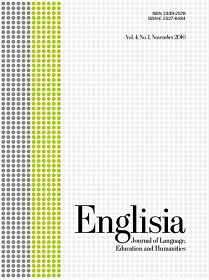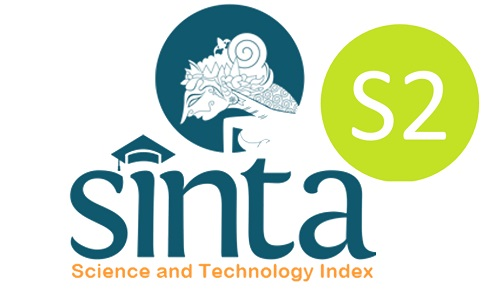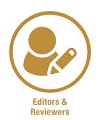BENEFITS OF WEB-BASED OR ELECTRONIC PORTFOLIO ASSESSMENT IN ESL CLASSROOM
DOI:
https://doi.org/10.22373/ej.v4i1.752Keywords:
artifacts, digital documentation, electronic portfolios, personal reflectionAbstract
The effective implementation and use of electronic portfolios in educational institutions confirm their value as an essential teaching and learning instrument. An electronic portfolio is a digital documentation or collection of artifacts (audio/video clips, text, visuals, and coursework) that represent its owner, whether it is an individual, group, or organization. Personal reflection on one’s work, achievement, or thoughts is a key component in many electronic portfolios. Some still question whether electronic portfolios are actually beneficial to the educational process. This piece of work overviews recent literature related to the use of electronic portfolios and examines the issues and challenges of effectively implementing and using electronic portfolios in educational institutions.Downloads
References
Abedi, J. (2002). Standardized achievement tests and English language learners: Psychometrics issues. Educational Assessment, 8(3), 231-257. doi:10.1207/s15326977ea0803_02
Alawdat, Maha. (2013). Using e-portfolios and ESL learners. US-China Education Review, 3(5), 339-351. Retrieved from: http://files.eric.ed.gov/fulltext/ED543181.pdf
Babaee, M., & Mereseini, T. (2013). Eâ€portfolios: A new trend in formative writing assessment. International Journal of Modern Education Forum, 2(2), 49-56. Retrieved from: https://archive.org/stream/IJMEF025/IJMEF025_djvu.txt
Brown, H. D. (1994). Teaching by principles: An interactive approach to language pedagogy. Englewood Cliffs: Prentice Hall Regents.
Cambridge, D. (2012). Can we do both? Eportfolios for student learning and assessment: Lessons learned at an american university. E-portfolios and Global Diffusion: Solutions for Collaborative Education, 1(1), 101-108. doi: 10.4018/978-1-4666-0143-7.ch008
Ayres, J. R. (2011). Electronic portfolios 2.0: emergent research on implementation and impact - Edited by Darren Cambridge, Barbara Cambridge, and Kathleen Yancey. Teaching Theology & Religion, 14(1), 145-149. doi:10.1111/j.1467-9647.2010.00679.x
Cambridge, D. (2010). Eportfolios for lifelong learning and assessment. San Francisco: Jossey-Bass.
Chan, P. P., & Yan, K. Y. (2013). Alternative assessment: Developing e-portfolio for final year project. Hybrid Learning and Continuing Education Lecture Notes in Computer Science, 90-101. doi:10.1007/978-3-642-39750-9_9
Grant, V. (2010). To ‘e’ or not to ‘e’: Electronic portfolios in the adult ESL classroom. Hawaii Pacific University TESOL Working Paper Series, 8(1), 20-24. Print. Retrieved from: http://www.nais.org/Magazines-Newsletters/ISMagazine/Pages/To-E-or-Not-to-E.aspx
Green, R. L., & Griffore, R. J. (1980). The impact of standardized testing on minority students. The Journal of Negro Education, 49(3), 238-252. doi:10.2307/2295083
Jaen, R. (2012). The effective digital portfolio. Show Case Developing, Maintaining, and Presenting a Design-tech Portfolio for Theatre and Allied Fields, 110-118. doi:10.1016/b978-0-240-81926-6.00006-1
Lane, C. (2009). Electronic portfolios 2.0: emergent research on implementation and impact - Edited by Darren Cambridge, Barbara Cambridge, and Kathleen Yancey. Teaching Theology & Religion, 14(1), 81-82. doi:10.1111/j.1467-9647.2010.00679.x
Law, B., & Eckes, M. (2007). Assessment and ESL: an alternative approach. Winnipeg: Portage and Main Press.
Lorenzo, G., & Ittelson, J. (2015). An overview of e-portfolios. ELI Papers and Reports, 1(1). Retrieved from: https://net.educause.edu/ir/library/pdf/eli3001.pdf
McAllister, L. M., Hallam, G. C. & Harper, W. E. (2008). The ePortfolio as a tool for lifelong learning: contextualizing Australian practice. In Proceedings International Lifelong Learning Conference, 246- 252. Retrieved from: http://www.sciencedirect.com/science/article/pii/S1877042811025390
Meyer, E. J., Philip C. A., and Wade, A. (2013). Teaching with electronic portfolios to develop 21st century literacies. LEARNing Landscapes, 6(2), 266-82. Retrieved from: http://eprints.qut.edu.au/14061/1/14061.pdf
Navarrete, C., & Gustke, C. (1996). A Guide to Performance Assessment for Linguistically Diverse Students. Albuquerque: New Mexico Highlands University.
Ng, W. (2015). Affordances of new digital technologies in education. New Digital Technology in Education: Conceptualizing Professional Learning for Educators, 95-123. doi: 10.1007/978-3-319-05822-1_5
Polly, D., Mims, C., & Persichitte, K. A. (2012). Developing technology-rich teacher education programs: key issues. Hershey, PA: Information Science Reference.
Tubaishat, A. (2014). E-portfolio assessment for learning: Ten years later – an experience from an outcome-based university. International Journal of Advanced Computer Science and Information Technology (IJACSIT), 3(4), 368-78. Retrieved from: http://elvedit.com/journals/IJACSIT/wp-content/uploads/2015/01/E-Portfolio-Assessment-for-Learning.pdf
Yastibas, A. E., & Cepik, S. Teachers’ attitudes toward the use of e-portfolios in speaking classes in english language teaching and learning. Procedia – Social and Behavioral Sciences. 176 (2015), 514 – 525. doi: 10.1016/j.sbspro.2015.01.505
Downloads
Published
Issue
Section
License
Proposed Policy for Journals That Offer Open Access
Authors who publish with Englisia journal agree to the following terms:
- Authors retain copyright and grant the journal right of first publication with the work simultaneously licensed under a Creative Commons Attribution License that allows others to share the work with an acknowledgement of the work's authorship and initial publication in this journal.
- Authors are able to enter into separate, additional contractual arrangements for the non-exclusive distribution of the journal's published version of the work (e.g., post it to an institutional repository or publish it in a book), with an acknowledgement of its initial publication in this journal.
- Authors are permitted and encouraged to post their work online (e.g., in institutional repositories or on their website) prior to and during the submission process, as it can lead to productive exchanges, as well as earlier and greater citation of published work (See The Effect of Open Access).









